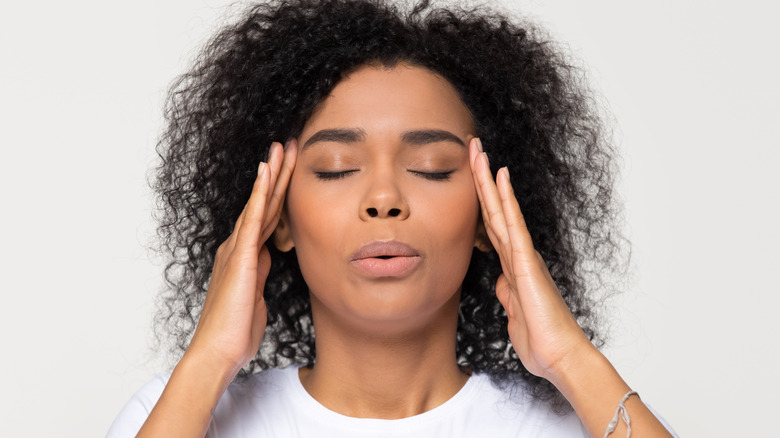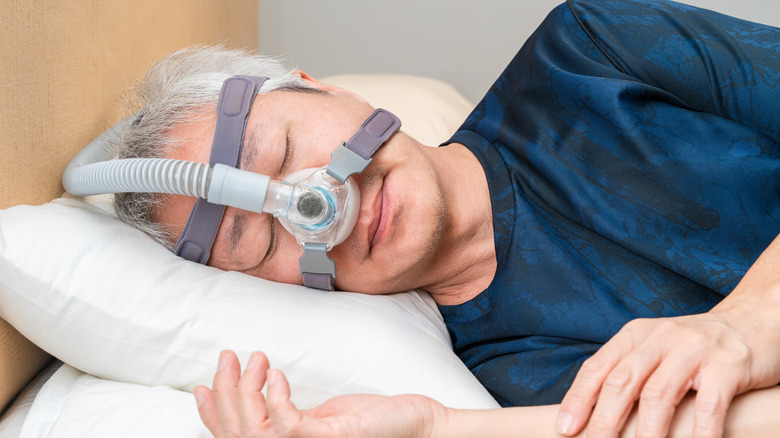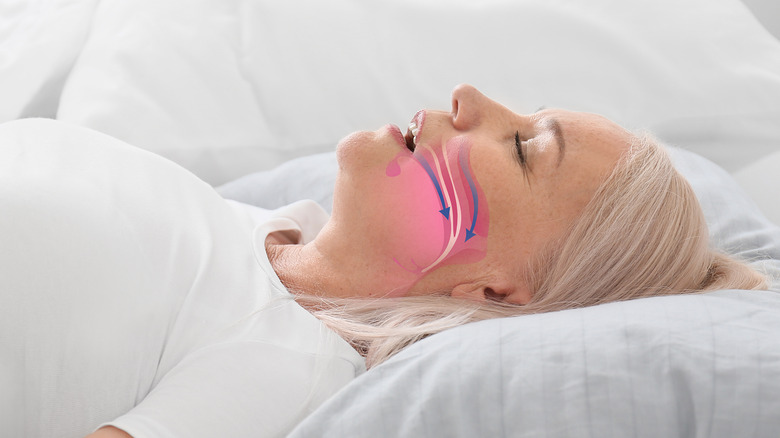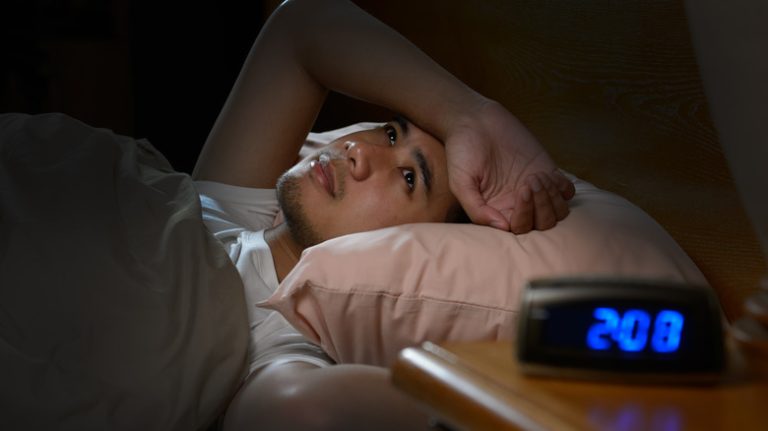Sleep apnea is a condition in which a person periodically ceases breathing while sleeping (per Mayo Clinic). There are a few specific types of sleep apnea. First, obstructive sleep apnea occurs when the muscles of the throat and tongue relax too much, causing a physical blockage in breathing. The next type is known as central sleep apnea — this is a result of faulty signaling from the brain to any of the areas that are in charge of maintaining proper breathing patterns. Finally, we have complex sleep apnea syndrome, which is a catch-all for the previous two types and involves a combination of causes.
If you suspect that you suffer from sleep apnea, the only way to know for sure is to see a sleep specialist, who will carry out a physical exam and then typically have you undergo a sleep study, according to WebMD. This is performed in a special facility where you will be monitored throughout the night to determine a diagnosis. Prior to making an appointment with your doctor, however, it helps to be aware of some of the main signs of the condition, which will give your doctor some additional information to help treat you. These include snoring, regularly waking up throughout the night or experiencing restlessness, daytime tiredness no matter how long you sleep, waking periodically with the feeling of not being able to catch your breath, and mental fog during the day. One other symptom you may be experiencing is headaches.
The sneaky symptom of sleep apnea: headaches

In short, headaches are most definitely a symptom of sleep apnea. This was demonstrated in a 2024 study published in the journal, Brain Sciences. When 1,131 participants were asked whether they experienced a headache upon waking up in the morning, nearly 30% of them responded in the affirmative.
The reason for experiencing sleep apnea-related headaches likely has to do with the interrupted breathing patterns that characterize the condition, although scientists don’t know for certain, as per the Sleep Foundation. It is thought that when breathing is hindered, the body doesn’t get as much oxygen as it would normally, leading to low blood oxygen levels. As a result, carbon dioxide is allowed to build up, which may inflate blood vessels, specifically those in the brain, and lead to headaches.
The Sleep Foundation points out that the type of headache associated with sleep apnea is specific — rather than a throbbing pain, those suffering experience more of a persistent, all-encompassing discomfort that is typically felt along the sides of the head and passes after a few hours. Medical News Today adds that to be certain that what you are experiencing is a sleep apnea headache and not a migraine, there are differences to look out for. For example, in the case of a migraine, you will likely experience nausea and extreme sensitivity to sensory input, such as noises and lights, which would not occur with a sleep apnea headache.
How is sleep apnea treated?

The good news is that there are various treatments to help those with sleep apnea. In fact, anyone dealing with headaches related to the condition will likely see them disappear once they are being properly treated for sleep apnea, according to the Sleep Foundation.
Experts at WebMD point out that the most common treatment for sleep apnea is a continuous positive airway pressure (CPAP) machine. A 2024 article via StatPearls explains that this machine involves a mask that is fitted either over the nose and mouth or just one or the other and a tube that is hooked up to a device designed to blow air into the user. The advantage here is that the continuous flow of air helps keep the airways open and breathing regularly. Other types of machines, such as the bi-level positive airway pressure (BiPAP) and adapto servo ventilation machine (ASV), provide a similar function but differ in the amount of airflow they produce (via WebMD). The latter also has the ability to self-regulate depending on the breathing patterns of the individual using it.
The Cleveland Clinic adds one more treatment to the list: oral appliance therapy. This device is inserted into the mouth at night and is designed to prevent the muscles of the tongue and throat from relaxing and obstructing the airway. In this case, a dentist will fit you for the appliance so that it is molded to your unique mouth shape.




